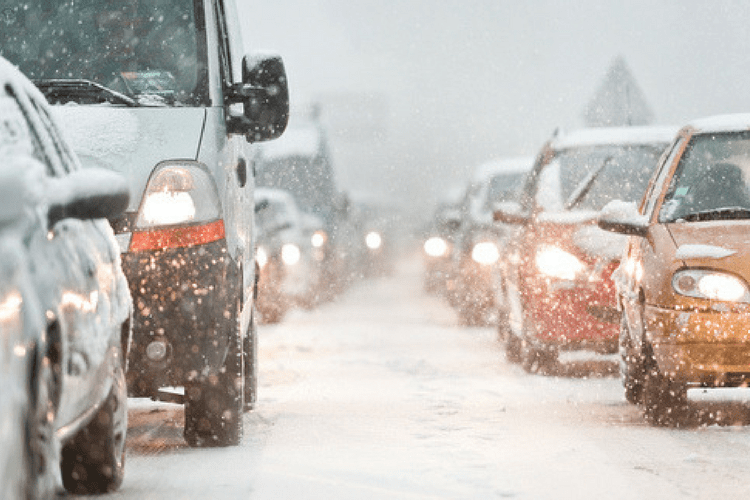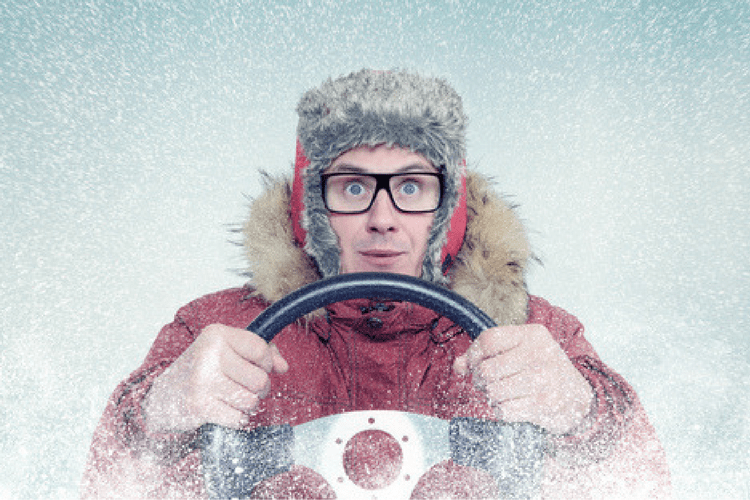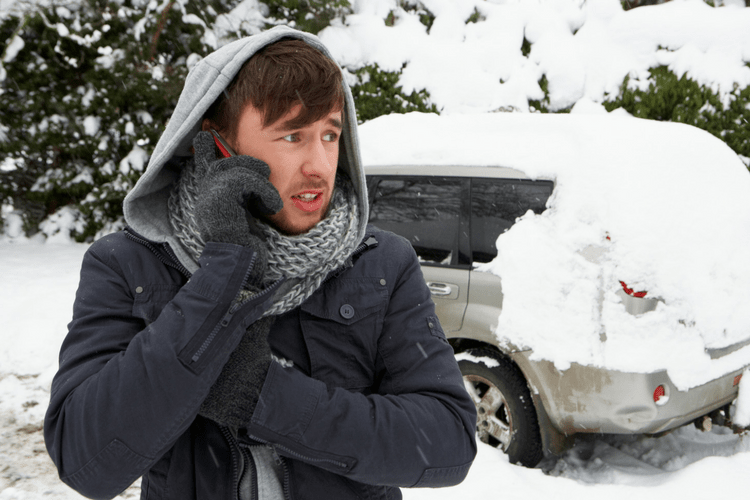10 Winter Driving Tips to Deal With Snow & Ice
Colder weather typically means unfavorable driving conditions. For example, winter precipitation leads to slippery roads and once the first snowflakes start building up, the traffic isn’t far behind. While there are some folks who might get angry at those who drive with caution, moving slowly is an essential preliminary step if you want to arrive safely at your end destination. So if you’re curious about what else you can do, check out the following 10 winter driving tips to stay safe while you’re driving in the snow and ice.
 1. Winterize your car
1. Winterize your car
Make sure your car is up to date with fluids, brakes, and especially fuel. Always keep your fuel tank at least half full during the winter, but particularly before longer trips. Be sure that you’ve recently had your oil changed and that all the other fluids in your car have been topped off before heading out on the road in the cold.
2. Make sure tires are properly inflated
No one wants to get stranded with a flat tire – particularly while driving in snow. Moreover, did you know that tires lose air pressure in the cold? Be sure that your tires are properly inflated, as tire pressure drops 1-2 psi for every 10 degrees in temperature fluctuation.
3. Always wear a seatbelt
This goes without saying but in the case of an accident, wearing your seatbelt can save your life. When you wear a seatbelt, it helps to keep you from being thrown from the vehicle or from hitting the dashboard or other hard surfaces inside the car. Snowy and icy roads are notorious for causing spinouts and leading to major collisions, so buckle up.
 4. Slow down
4. Slow down
Snow and ice can make the roads slippery and less predictable, which can make it more difficult to control your vehicle. When you are driving too fast, you may be unable to stop or steer effectively, which can increase the risk of an accident. Lastly, you never know if a patch of black ice is up ahead and you won’t realize it until you’re already losing traction.
5. Accelerate and decelerate slowly
Mashing your foot down on the gas or the brake while driving in snow is never a good idea. If there is a layer of precipitation between your car tires and the pavement, it takes longer to speed up and slow down since there is less friction between the rubber and the road. Use more care when pressing on the accelerator or brake pedal to ensure you’ve got enough traction when changing speeds.
6. Double the 3-4 second rule
A general driving tip is to stay at least 3-4 seconds behind the person in front of you. However, that time should be increased to 6-8 seconds when driving in snow or on ice. Allowing this much space will give yourself enough time to react to changing conditions and avoid a collision.
7. Stay alert
Do not drive distracted. Safe driving in snow means paying attention to your surroundings, not to your phone or the infotainment screen in the center console. Being alert allows you to make good decisions while driving, such as adjusting your speed or changing lanes to avoid an obstacle. It also helps you to be more aware of other vehicles and pedestrians.
8. Do not use cruise control
When you are driving in the snow, you need to be able to adjust your speed and brake gradually in order to maintain control of your vehicle. Using cruise control can make it more difficult to do this, as it can cause you to lose touch with the feel of the road and the traction of your tires. Keep this feature off so you can make real-time adjustments as necessary.
9. Check the weather & plan your route
Snowy weather can make driving more difficult and dangerous, due to reduced visibility, reduced traction, and the risk of slippery roads and black ice. By checking the weather ahead of time and planning the best route, you can get a better idea of what to expect on your trip, and you can make the necessary preparations to ensure your safety. This might include packing warm clothing, supplies, and emergency equipment, which brings us to our tenth and final tip.
 10. Pack an emergency kit
10. Pack an emergency kit
Even the most cautious drivers will find themselves on the side of the road when the weather makes it unsafe to drive. It’s times like these you want to have a winter car survival kit in the trunk. A typical kit might include a flashlight, first aid supplies, a set of jumper cables, a spare tire, a bag of sand or kitty litter for traction, and a blanket to keep warm in case you get stalled.
Ultimately, driving in the snow doesn’t have to be as dangerous as it seems if you follow these basic tips. And now you know how to make sure that you and your car are ready for the road ahead, no matter how bad this winter might be.







This is the best article I could find on http://www.google.com Bookmarked! Thanks
It’s just a shame people don’t abide by the 6-8 second rule. The amount of times people are right up behind you!
“Should you buy winter tires?” <- Winter tires are mandatory when winter is coming in quite a bunch of countries.